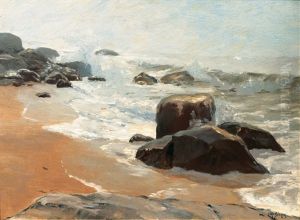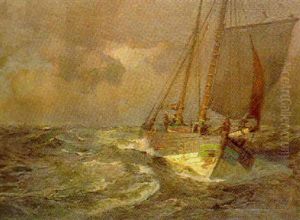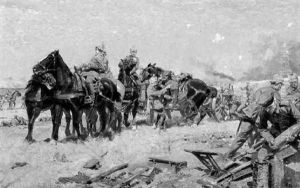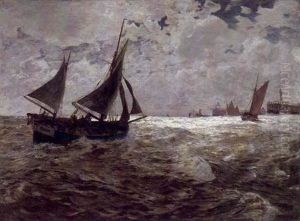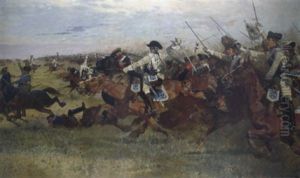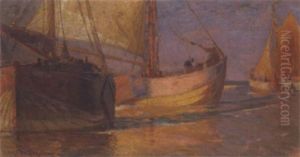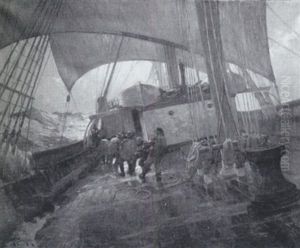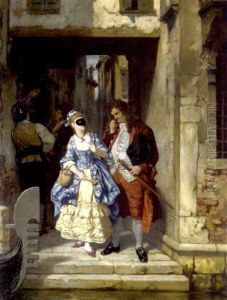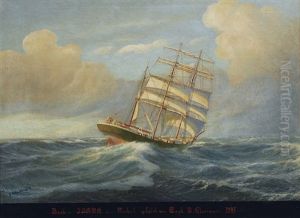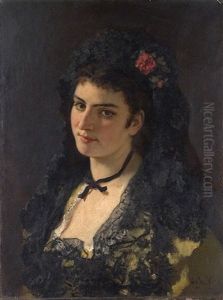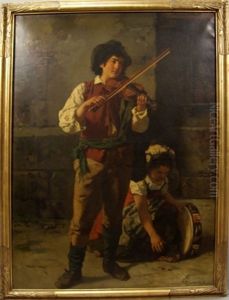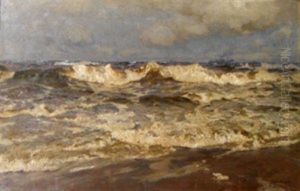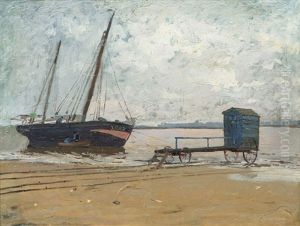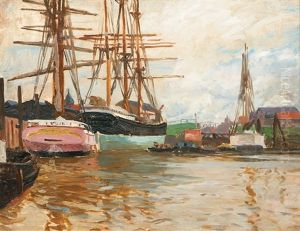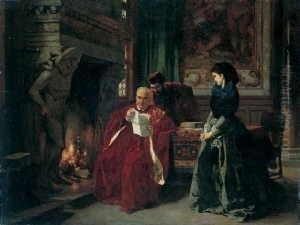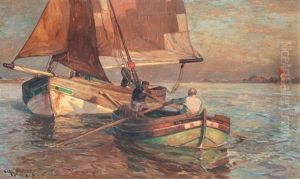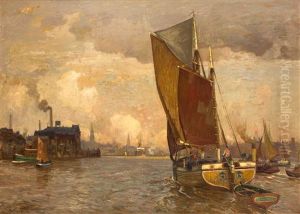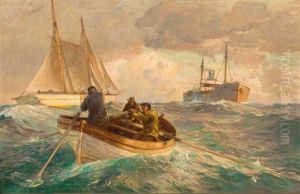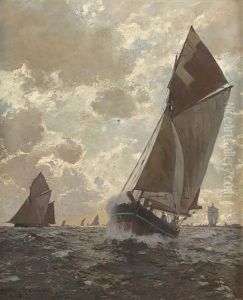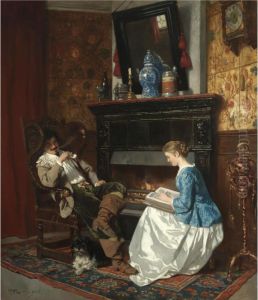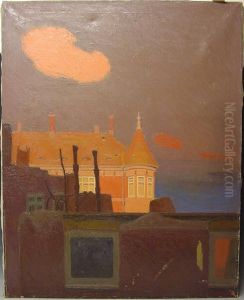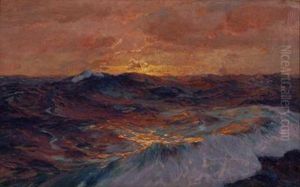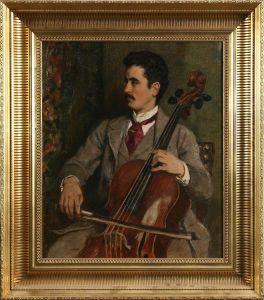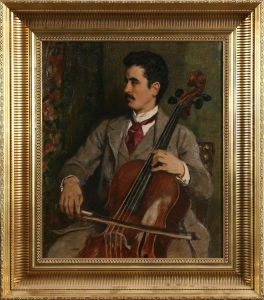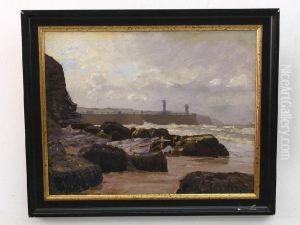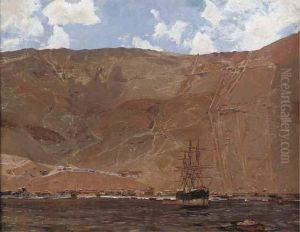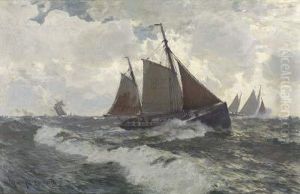Carl Becker Paintings
Carl Becker was a German history painter born on May 18, 1820, in Berlin. He was renowned for his academic art and his works often depicted scenes from the Renaissance and the lives of famous historical figures. Becker's paintings were characterized by their attention to detail, historical accuracy, and often, a sense of romantic nostalgia for the periods he portrayed.
Becker received his early education at the Prussian Academy of Arts in Berlin, where he studied under various prominent painters of the time. His talent was recognized early, and he was awarded a scholarship that allowed him to travel to Italy. His Italian sojourn was highly influential; he was deeply impressed by the Renaissance masters, and their influence is evident in his subsequent work. Becker was particularly interested in the daily lives of historical figures, and this interest informed much of his artistic output.
Upon his return to Germany, Becker continued to paint and started to gain a reputation for his finely executed historical scenes. He became a member of the Berlin Academy and later a professor, positions that established him as a respected artist within academic circles. His works were sought after by patrons and were often exhibited in art salons and galleries across Europe, solidifying his reputation as a leading history painter of his time.
Becker's artwork reflects the 19th-century European academic art tradition, which emphasized classical themes and a polished, realistic technique. He was not an innovator in terms of style or technique, but his work was appreciated for its craftsmanship and the window it provided into historic settings and costumes. His paintings were also notable for their narrative quality, often capturing moments that seemed to tell a story and inviting the viewer to ponder the context of the scene.
Carl Becker died on December 20, 1900, in Berlin. Though his work may not be as well-known today as that of some of his contemporaries, during his lifetime, he was a respected artist whose paintings contributed to the popular romanticized view of European history that was prevalent in the 19th century. His paintings can still be found in art galleries and museums, and they continue to be studied for their representation of 19th-century academic art and historical narrative painting.
